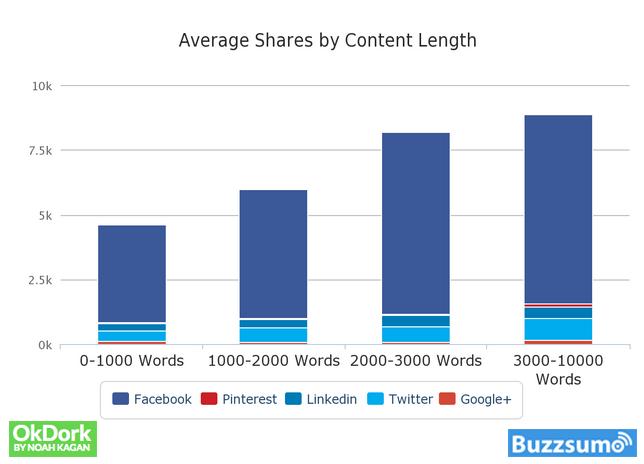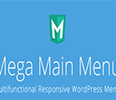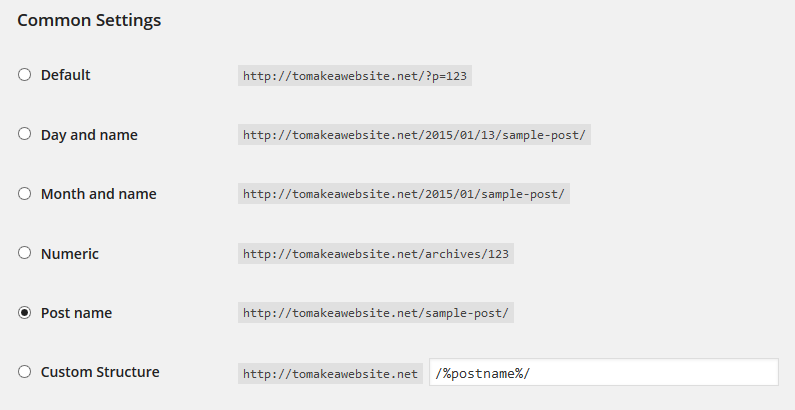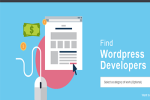25 Common WordPress Mistakes to Avoid Making
We all make mistakes, we’re human after all. And for WordPress users, especially beginners who want nothing more than to set things up as quickly as possible and begin posting content, mistakes can and probably will be made. In your hurry to start building your website and posting great content there are a few major and more than a few minor mistakes that you may make that could lead to multiple problems down the road.
In this article I outline all of the most common mistakes that WordPress users make, especially those who are new to the WordPress/blogging world.
1. Choosing the wrong theme
Choosing the best, feature rich theme is important for so many reasons. SEO isn’t the only one of them, having a theme that functions the way you want it is crucial for the design aspect of your website and helps make your blog look more professional (which will keep visitors on your website longer). If you have limited customization options for your theme then you will most likely be left with a rather bland looking blog.
Instead, pick a theme from a reputable developing company. I do not ever recommend that you use a free WordPress theme for a variety of reasons. I’ll give you the short version though, free WordPress themes typically come with very limited customization options and don’t have many features – such as a built-in, lightweight social share bar, built-in related posts and custom widgets.
If you are looking for a professional theme then you might check out MyThemeShop (which is what this website uses).
2. Having WordPress.com instead of WordPress.org as your platform
Often it is a point of confusion when those wanting to start their own blog with WordPress find out that there are in fact two WordPress versions. So which one are you supposed to choose, WordPress.com or WordPress.org? You need to understand the core differences between each so that you are able to choose the best platform.
While they both have their advantages and disadvantages, if you are wanting to start a professional blog that you want to eventually make money from and customize, then I highly recommend you use WordPress.org. You can even read about how to use WordPress.org to start your own blog here. With WordPress.org you are able to have full control over when and where to display ads, customization, plugins and relatively cheap premium themes. However, if you are looking to start a casual blog that you will only post to a few times a month (non-serious websites in other words) then WordPress.com may be your best bet.
3. Using the default permalink structure
This one is extremely important and potentially devastating. Important because changing your permalinks from the default, which looks something like this: tomakeawebsite.net/p=123truesoigwesjoigjeoitgj, to something else is important for your SEO. If your default permalink structure is left, then URL’s will not be SEO friendly. Not only is changing permalinks important for your SEO but it is also potentially devastating later on. For example, should you ever want to change your permalinks after your website has been live for a while, then all of the backlinks pointing at your blog will be no more (since the URL’s of your pages will have changed).
So how does one change permalink structure? It’s actually very simple, simply navigate to Settings -> Permalinks and change the default to something else:
I recommend changing the default to either Post Name or Day and Name.
4. Spending more than you need to
When starting off with your self-hosted blog (using WordPress.org), all you need to spend money on is a domain, a web hosting service and a nice looking, feature rich, premium theme. You don’t need anything else, at least not for a while, you will need to spend more down the road when your blog starts getting lots of traffic.
When budgeting you should try to shoot for two birds. In other words, instead of buying a web hosting service and then purchasing a domain name, do both. Some web hosting services offer a free domain name for one year in addition to your hosting. A few select others offer a free domain name for life as well as your hosting package. Since I like budgeting, this is the option I choose. GreenGeeks offers you a free domain name for life (saving you $10-$15 a year) to go along with your web hosting service.
5. No SEO
Creating great content is important, but equally important is optimizing your website and webpages for the search engines. Search engine optimization shouldn’t be put off. As soon as your blog goes live simply install a SEO plugin. I recommend either SEO by Yoast or All in One SEO.
6. Not backing up your blog
You may not think it will ever happen to you, your blog won’t ever get hacked or crash. You probably won’t be hacked or have your website crash, but if you are one of the unlucky ones you need a backup. Backing up your blog, especially a blog that you put a lot of work into, is a must. It’s especially important when you preform updates or move to another web host (such as a specialized WordPress hosting service).
If you are on the WordPress.org platform, then I recommend you use VaultPress, which is also the backup service I use. I feel comfortable with VaultPress because they are owned by Automattic, who are the same guys who own WordPress.com.
7. Not Speeding up your blog
Did you know that speed is now a factor in where you rank on Google? It is, but it’s also important for more reasons than just SEO. You want people to stay on your blog longer and hopefully do something like subscribe via email or like you on Facebook before they leave. If your blog is slow, chances are your visitors will leave before performing one of those desired actions.
Recommended Reading: The complete guide to speeding up your WordPress blog
8. Having ‘Admin’ as your user name
If you want to get your blog hacked then have “admin” as your username. It’s the first guess among hackers and should never be used. It’s not difficult, after installing WordPress choose a hard to crack username. It also doesn’t hurt to have some numbers in your username and password as well.
9. Posting great content…and that’s all
Content is king right? SEO “experts”, at least some of them, tell you that all you need to do is create great content and they (visitors) will come. That’s not entirely true. Creating great content is just one step in many of getting your blog noticed. One of the most important steps to getting listed in the search engines is to get backlinks pointing to your blog. You can do this a number of ways, including guest posting, creating infographics (and then submitting them to infographic submissions sites like Visual.ly) and getting listed with content aggregator websites.
10. Posting short content
Posting a few hundred words and hoping for the best isn’t something you should do. Short content tends to not cover subjects very well but that’s not the only reason you shouldn’t be wasting your time with shorter articles.
For example, did you know that the average top ten search results on Google are over 2000 words? Did you also know that the longer your posts are the more social shares they tend to attract? The below graph says it all (image via okdork).

12. Not bothering with Google Webmaster
There are a number of reasons why you should, no need, to be using Google Webmaster. I won’t go into all of them here (that’s a whole article in itself), but Google Webmaster will alert you to any manual penalties your blog gets hit with. This is extremely important since they give you a little info as to what caused the penalty and how you can take steps to correcting it. They also tell you how many backlinks you have, what the search queries are for your website, if there are any crawl or URL errors and more.
13. Not updating
For one reason or another, you may be tempted to ignore upgrading. Maybe you are scared that the latest update may not be compatible with your theme (which is another reason why you shouldn’t use free WordPress themes), or you don’t have backups of your website and are afraid of losing data. This can come back to haunt you if there are any security vulnerability issues and your blog ends up getting hacked.
If your WordPress theme and plugins are properly coded you should not run into any problems. Which is all the more reason to only install plugins from premium developers (such as WPMU-dev), popular and regularly updated plugins on the WordPress.org website, and premium themes from known companies.
14. Installing the wrong plugins
Installing the wrong plugins can do harm to your blog. Perfect example, thanks to a security vulnerability in an email plugin, over 50,000 WordPress blogs were hacked. This wasn’t four or five years ago, but just 6 months ago. Yes, WordPress goes through many updates that help keep it secure. No, it is never 100% secure. Typically you should only install plugins from premium developers or plugins that are popular and/or have a good rating.
Installing a plugin that hasn’t been updated for several years and has a 2 / 5 star rating probably isn’t a good idea. It’s also a good idea to only install plugins that are needed and delete ones that you are no longer using.
15. Having a non-responsive blog
If you bought a premium theme from a reputable developer then chances are you blog is mobile responsive. If you don’t know if your blog is mobile responsive, then you can check to see what it looks like on a variety of devices using MobileTest. Having a responsive blog has never been more important. Why you ask? Because mobile internet usage is soaring upward. In fact, mobile internet usage (which has consistently been increasing) has already overtaken desktop internet usage (which has remained stagnant). Bottom line, you’re going to be missing out on plenty of traffic if your site looks like crap on mobile devices.
Recommended Reading: How to make your blog mobile friendly
16. Not having a SPAM fighter
Fighting spam is annoying, well unless you have the right spam fighter. Fighting spam is as easy as installing a plugin, simply install and activate Akismet, get your free API key and you are done. You can also use alternative spam fighting plugins like Anti-Spam Bee.
17. Not securing your blog
There is nothing worse than having your blog hacked. And yes, as I mentioned above, you probably won’t ever have a website hacked…but why risk it? You could install a simple (and free) plugin and have peace of mind. iThemes Security and Wordfence are two of the most popular WordPress security plugins available.
18. Choosing the wrong web hosting service
It doesn’t get any more frustrating than choosing a low quality web host. Engaging in this common mistake can cost you money, lots of wasted time and have you pulling your hair out. Don’t go with just the cheapest web hosting service, instead look into some of the reviews for each company. My personal favorite is GreenGeeks (which is the host this blog uses) or Arvixe because they are both reputable hosting services that also give you a free domain name for life.
19. No internal linking
Linking to other posts on your blog is important for several reason. The most obvious is that it can help keep people on your blog and (hopefully) convince them to do a desired action such as buy a product, subscribe via email, or like you on Facebook. Another reason you should do internal linking is because it helps your SEO.
20. Not installing essential plugins
There are some plugins that no blog should live without. Think SEO, contact form, some type of caching plugin, Google Sitemaps, image optimization, etc.
Recommended Reading: 50 essential plugins every blog needs
21. Making it difficult to share your articles
Having some type of sharing function on your blog is a must. It’s not just enough to have a share function, but one that is obvious. For example, this type of share bar is probably not a great idea to use:
Instead have a more obvious social sharing function on your blog. I’ve experimented with quite a few over the years and have found that the floating share bars (such as the one this blog uses) tend to attract the most shares.
22. Not having your own favicon
First, what are favicons? Favicons are the very small, 16 x 16 pixel icons that you see on your tabs next to the website name. They also show up in the favorites section whenever someone favorites a page on your blog. For beginners, many simply put off adding their own favicon. You shouldn’t, adding your own favicon adds a bit of professionalism to your blog and favicons are actually very easy to make.
23. Not changing the comment system
This one isn’t 100% necessary…but you should still do it. The default, WordPress comment system is crap and there are plenty of more advanced and free commenting options, Disqus, JetPack comments and CommentLuv to name a few.
Recommended Reading: Disqus vs JetPack vs CommentLuv: comment system faceoff
24. Not using Evernote
This is also optional. If you blog regularly, Evernote is a gift. I should really write a whole post on the benefits of using it for your blogging, but think of it as a much more advanced notepad. With it you can save pages, add notebooks and notes to those notebooks, add tags, add reminders and a host of other things. Check it out here (and yes, it’s free).
25. Not having a way for readers to ‘subscribe’
It’s not just about building an email list, but also making sure readers who like your content can be notified whenever you post something new. This can and should mean that you create a Facebook and Twitter page as well as have some way for readers to get notified via email of any new posts. Best of all, these options are free they just require you to put a little time and effort into them.



















Hi Matt
There is no doubt that almost every blogger or webmaster do these WordPress mistakes once in their life.
& These mistakes help them to learn something new again and again with time.
You have listed here almost all the major WordPress mistakes which bloggers do including me.
I have also did so many mistakes in my WordPress blog. I can remember when I started my 1st blog, I never created any BackUp of my WordPress site. One day, by mistake I deleted the database of my blog from Cpanel and It created a major issue in my site.
I didn’t knew anything about it so I started my blog again by re-installing the WordPress.
That was the unforgettable mistake because It contained hard work of almost 2 months and I completely losed it by deleting the database.
After that day, I always take complete BackUp of my each site.
Thanks for covering such a nice article so that people can learn about these mistakes and also can avoid them. 😀